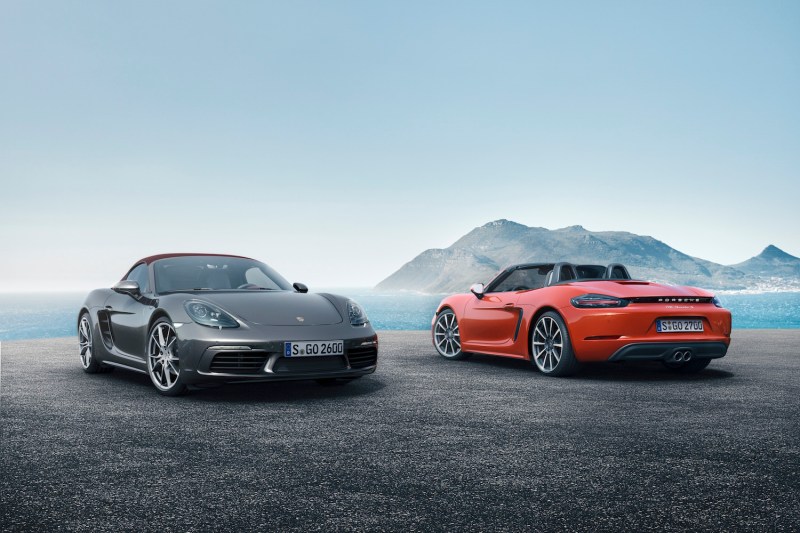It’s been 20 years since Porsche first introduced its entry-level roadster, and now the German automaker is making a series of important updates to its mid-engined model.
The first thing would-be buyers will notice is that the Boxster’s name will now be the 718 Boxster, reminiscent of the race-bred sports car that conquered global circuits in the late 1950’s and early 1960’s. Like the 718 Boxster’s ancestor, the reborn model will come equipped with a flat four-cylinder engine. Some things do change over half a century, though, so the 718 Boxster will be a forced induction motor churning out a healthy amount of power.
Sure, the turbo-four in the base and 718 Boxster S models will lack the character of a naturally-aspirated flat-six engine, but expect the larger engine to return for the Cayman GT4 and Boxster Spyder versions.
The base model 718 Boxster develops 300 horsepower and 280 pound-feet of torque from its 2.0-liter turbocharged motor while the hotter 718 Boxster S bumps displacement another 0.5-liter for 350 horses and 309 lb-ft. of torque. The “S” also uses variable turbine geometry for more efficient power. Both 718 Boxsters gain 35 hp over their predecessors and are 14 percent more fuel efficient.
Porsche purists will be pleased to hear that both vehicles retain six-speed manual transmissions as standard, but the real performance gains come when you tack on the PDK double-clutch transmission. 0-to-60 mph takes just 4.0 seconds for the 718 Boxster S (an improvement of 0.5 seconds) and top speed rises to 177 mph. The base 718 Boxster accomplishes the same run in 4.5 seconds and tops out at 170 mph.
Though the new 718s look like almost exactly like the most recent model year roadsters, Porsche claims “every body part except for the luggage compartment lids, the windshield, and the convertible top has been changed.” Inside, the dash has also been given an update and the infotainment system, Porsche Communication Management, has been freshened.
Power is great, but the Boxster is renowned for its handling, so Porsche has focused on re-tuning the roadster’s suspension, steering, and chassis. The automaker claims the car’s electric steering system is 10 percent more direct (and I guess we’ll have to take their word for it). Porsche’s Active Suspension Management (PASM) will lower the car’s ride height 10mm, and its PASM Sport Suspension can be optioned for a 20mm lower stance. For on-the-fly suspension adjustments, Porsche offers its Sport Chrono Package with three driving models: Normal, Sport, and Sport Plus.
When the 718 Boxster/S goes on sale in June of this year, the base model will start at $56,000 while the ‘S’ will check in at $68,400 (both prices exclude a $1,050 destination charge).










